#stephendouglas
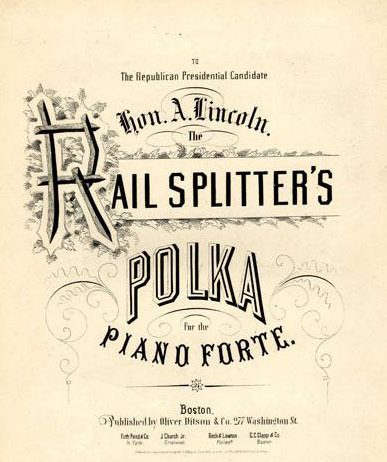
Though the word “polka” brings forth images of accordions, lederhosen, and Oktoberfest, in the 1860’s, polka was a new music trend that was taking Europe and the U.S. by storm. What had started as a folk dance from Bohemia (modern-day Czech Republic) quickly spread across Europe due to the printing of sheet music in the 193o’s. The ability to record the music and share it via sheet music allowed for polka to travel to bands all across Europe. Eventually, the upper classes within the U.S. began to enjoy the new sound from Bohemia. With the influx of immigrants to the U.S. during this period, it’s no surprise that many of them brought along instruments and continued to play music that reminded them of home.
As is true with most songs, the ability to dance as well; and the subject of the music are vitally important. It is of no surprise that many songs have well-known individuals as their topic. The Lincoln Collection has a few polka pieces, generally centered on the 1860 Presidential election. With all the parades, conventions, and speeches, having music to show the prowess and candidacy of someone within the party could be a helpful (and entertaining) push to victory.
For example, “The Rail Splitters Polka” by A. Neuman is one such instrumental polka that focuses around young Lincoln and his “railsplitter” persona.

Another example of a Lincoln-related polka is one by the same name as above, the “Rail Splitters Polka” by Harry L. Tatnall.


Lincoln was not the only candidate that had his own polka music. In 1860, the “Douglas Polka” was written and published by J. Church Jr. about Stephen Douglas, who was on the Northern Democratic ticket for the presidency.

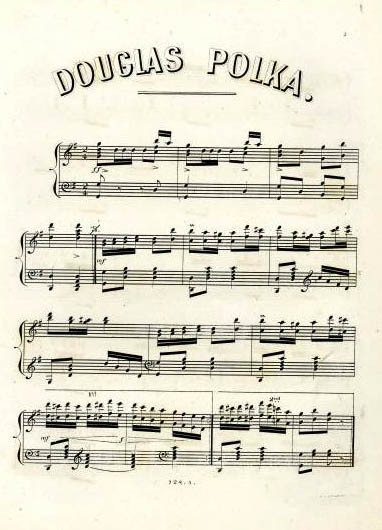
Conventions weren’t the only reason for polka music. Music was composed about events going on, including Sanitary Fairs that were held to raise funds for the United States Sanitary Commission. These uplifting and recognizable sounding songs were both played at the conventions and had their sheet music available afterwards for continued revelry.

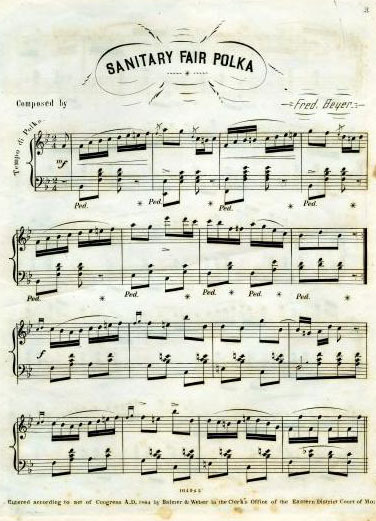
Some polka pieces actually focused on plays that were popular during the day. One is “Our American Cousin Polka”, based on the crowd-pleasing comedy by Tom Taylor. Using popular culture to inform the focus of music, including polka, was not unusual and could also be incorporated in the performances themselves.
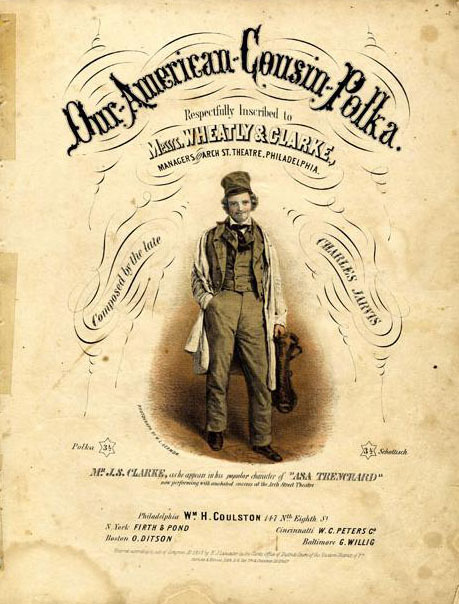

One of the more interesting polka pieces in the Lincoln Collection is one named after Lincoln’s wife: The Mary Todd Lincoln polka. Mary was often criticized for her clothing, decorating, and celebration in a time of warfare (she would have been criticized had she not done any of the aforementioned things, though). With the upcoming White House Ball in February of 1862, Lincoln enlisted Francis M. Scala, the leader of the Marine band, to play at the reception.

One of the songs played that night was the “Mary Todd Lincoln Polka.” The sheet music was hidden within the Lincoln Collection, and you can hear the full music here: http://contentdm.acpl.lib.in.us/digital/collection/p15155coll1/id/2343/rec/1
During nineteenth-century presidential campaigns, small metal tokens that could be carried in a pocket or sewn onto a jacket provided individual voters with a simple, inexpensive way to advertise their support for a candidate. Many tokens simply featured a profile of the candidate on one side and a patriotic image—the “president’s house” or a flag or an eagle—on the reverse.

But some tokens carried a more specific campaign message about an issue or idea. Here are some examples of “issue” tokens from the Lincoln Financial Foundation Collection for the presidential elections of 1860 and 1864.
The central issues of the 1860 presidential campaign revolved around slavery—the institution’s expansion into federal territories, the right of slaveholders to transport slaves into free territory, the status of escaped slaves in the free states, the requirement that citizens of free states return escaped slaves to their masters, the status of free labor in a slave society. Campaign tokens like these expressed the voter’s stand on those issues.
This copper token features Lincoln’s profile, name, and birth date on the front, and proclaims the Republican position on the slavery issue on the reverse—“No More Slave Territory.”

The front of this brass token displays only the candidate’s profile and name. The reverse delivers the message: “The People’s Choice” is Lincoln and Hamlin, who stand for “Freedom & Protection” (that is, protective tariffs).

This brass token supports “Hon. Abram Lincoln,” who is pictured on the front and touted on the reverse as “The man that can split rails or guide the ship of state.” Republican candidates for “Freedom & Protection” are “Lincoln & Hamlin.”

Partisans of Democrat Stephen Douglas could also carry tokens proclaiming their candidate’s views. A token bearing a full-face portrait of Douglas on the front states “Intervention Is Disunion” on the reverse, asserting any interference with the institution of slavery will result in national division. The solution is M.Y.O.B.—a message to free soil and antislavery partisans to “mind your own business.”

Another Douglas token features the candidate’s profile on the front and the assertion on the reverse that “Popular Sovereignty” will assure “National Unity.”

The 1864 presidential election was in one sense a referendum on the Civil War—would the North continue to fight to defeat the Confederacy, restore the Union, and guarantee emancipation; or would there be peace at any price? The Republican platform supported the war’s continuation; the Democratic platform supported peace. Some campaign tokens reflected those stands.
On this token the president’s profile is surrounded by 34 stars, for the 34 states that would make up a restored Union. (Nevada would be added as the 35th state on October 31, 1864, just days before the election.) The reverse features the American eagle and shield and proclaims “Lincoln and Union.”
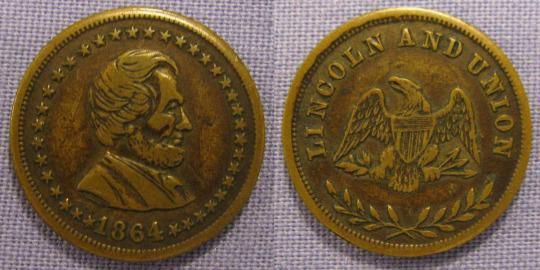
This copper token also supports Lincoln and “Our Union.”
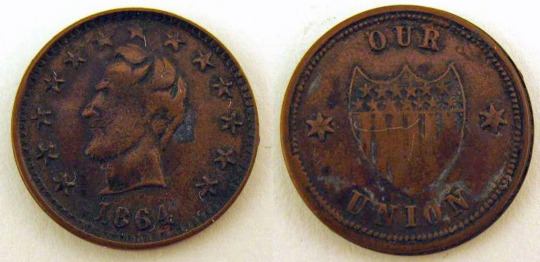
This copper token takes a more aggressive stance. It features the profile of “President Abm. Lincoln” on the front and asserts “No Compromise with Traitors” on the reverse.
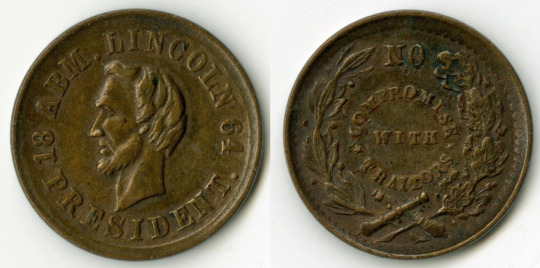
Democratic candidate Gen. George B. McClellan is pictured in uniform on the front of this campaign token. The reverse proclaims “The Union Must and Shall Be Preserved,” though the terms of that preservation are unclear.

